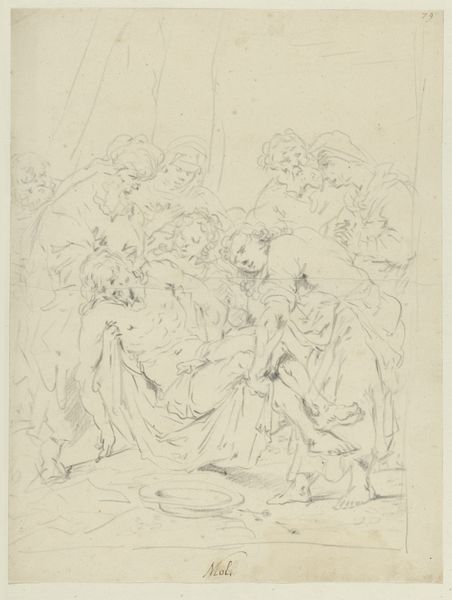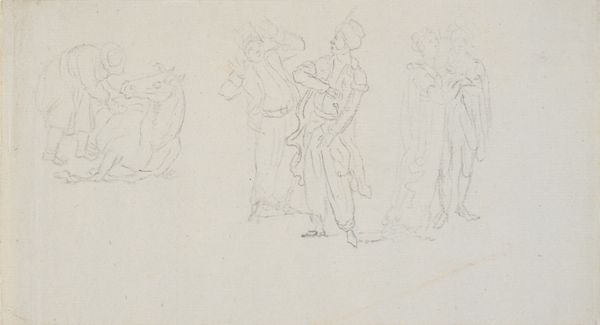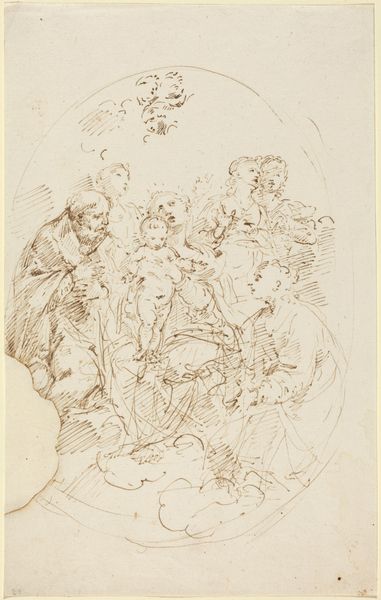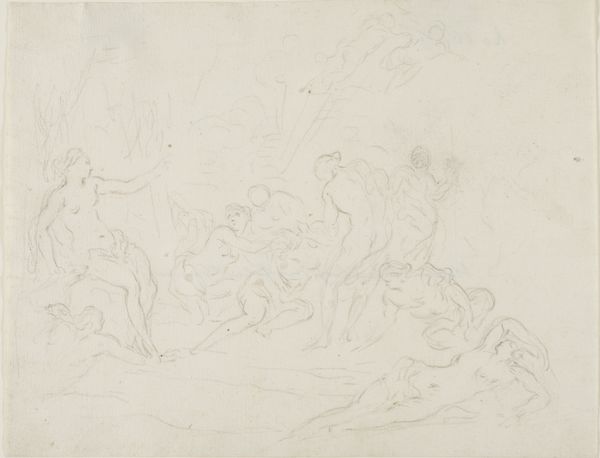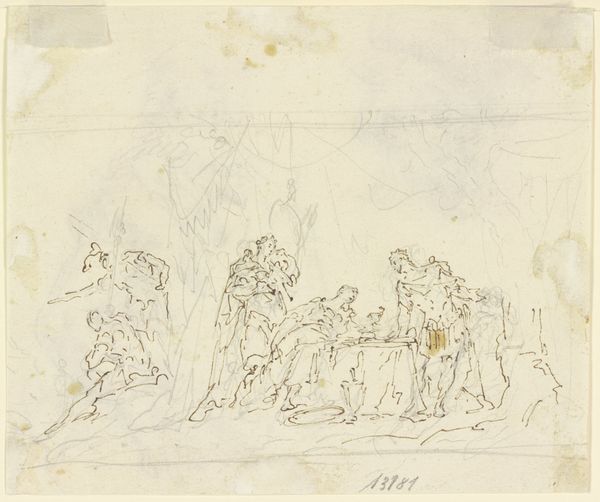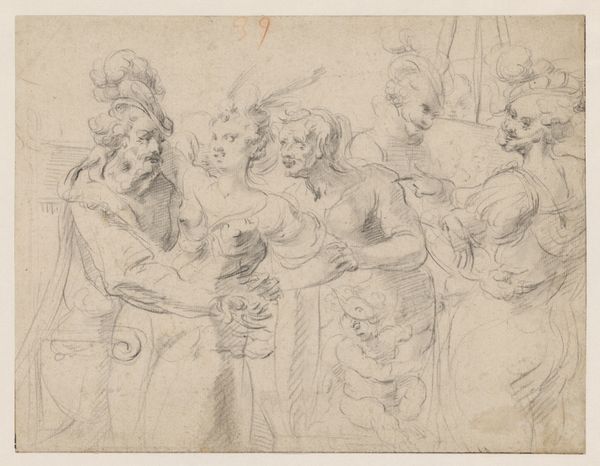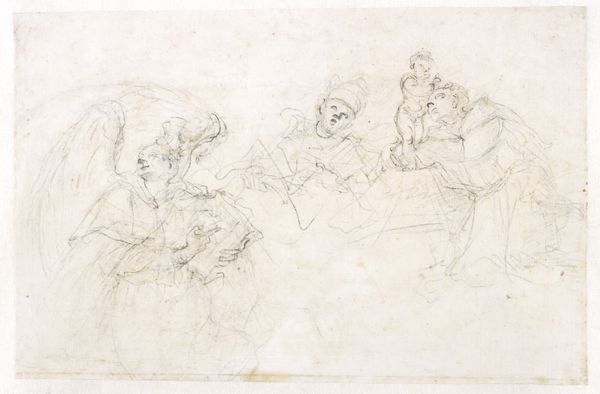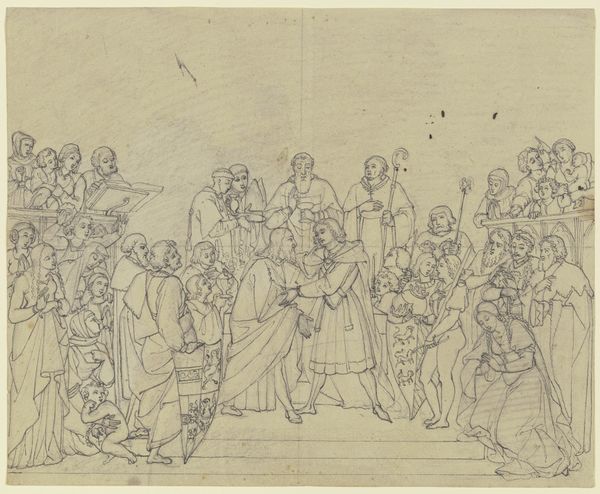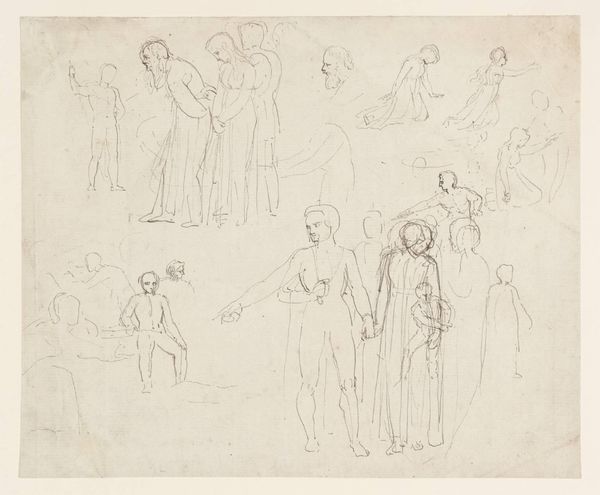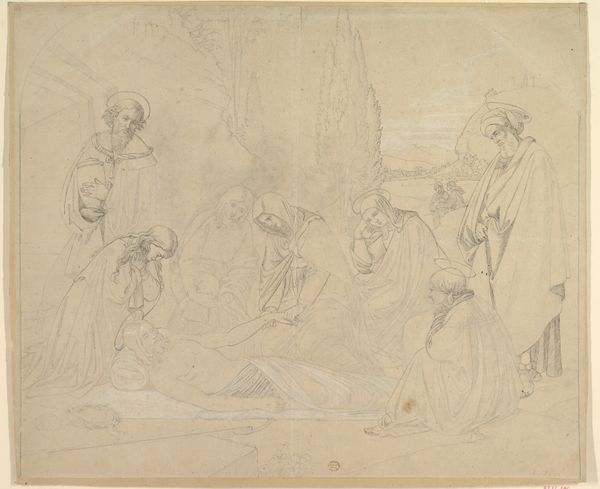![Mucius Scaevola [recto] by John Hamilton Mortimer](/_next/image?url=https%3A%2F%2Fd2w8kbdekdi1gv.cloudfront.net%2FeyJidWNrZXQiOiAiYXJ0ZXJhLWltYWdlcy1idWNrZXQiLCAia2V5IjogImFydHdvcmtzL2Y2YzYyMGUwLTljZTgtNDdlZC05MGQzLTg0N2NlNDYzOGU2ZS9mNmM2MjBlMC05Y2U4LTQ3ZWQtOTBkMy04NDdjZTQ2MzhlNmVfZnVsbC5qcGciLCAiZWRpdHMiOiB7InJlc2l6ZSI6IHsid2lkdGgiOiAxOTIwLCAiaGVpZ2h0IjogMTkyMCwgImZpdCI6ICJpbnNpZGUifX19&w=3840&q=75)
drawing, pencil
#
drawing
#
narrative-art
#
figuration
#
pencil
#
line
#
history-painting
#
academic-art
Dimensions: overall: 18.4 x 20.8 cm (7 1/4 x 8 3/16 in.)
Copyright: National Gallery of Art: CC0 1.0
Curator: This is a pencil drawing by John Hamilton Mortimer titled "Mucius Scaevola." Editor: My first impression is of sketched anticipation. It’s unfinished but powerfully expressive. Look at the urgency conveyed just through line work! Curator: Absolutely. Mortimer’s choice of line emphasizes the dramatic narrative at play. Mucius Scaevola was, of course, a Roman hero famous for thrusting his right hand into a fire to prove his loyalty to Rome. Editor: The historical context is key. This likely relates to the period of political unrest and revolution, particularly since ideas about heroism were very publicly debated and revised in Britain at that time. Is the setting clearly established here? Curator: Notice how Mortimer strategically employs a series of preliminary faces to provide us the atmosphere without relying upon literal architectural space. There are quick indications of setting with classical robes and a sketched urn. Editor: The relatively uniform quality of the pencilwork seems crucial to its emotional tenor. Each character appears captured mid-thought, a freeze frame from an imagined drama playing out in public life. Curator: The tonal values contribute heavily here, modulating attention through the graphic space by increasing the saturation of line over key details, such as the hands of Mucius and his captor. Editor: Given how these drawings of his circulate as both finished works and process documents, is there a clear separation of design and completion? Is this incompleteness itself a virtue, implying spontaneity? Curator: I am compelled by how he implies a depth of emotion despite the limitations of a sparse tonal range. The minimal indications of drapery still effectively convey weight, volume, and character, an intentional, classical affect. Editor: I read the sketch-like rendering as vital, bringing viewers in to the creative process through transparency in medium and subject. The audience is asked to consider ideas, perhaps, more than behold aesthetic refinement. Curator: Perhaps what this teaches us is how to appreciate history in media res, even while focusing primarily upon basic shapes and formal relationships. Editor: Yes, these incomplete works provide a critical window into 18th century debates around ideal political action and figure drawing.
Comments
No comments
Be the first to comment and join the conversation on the ultimate creative platform.

